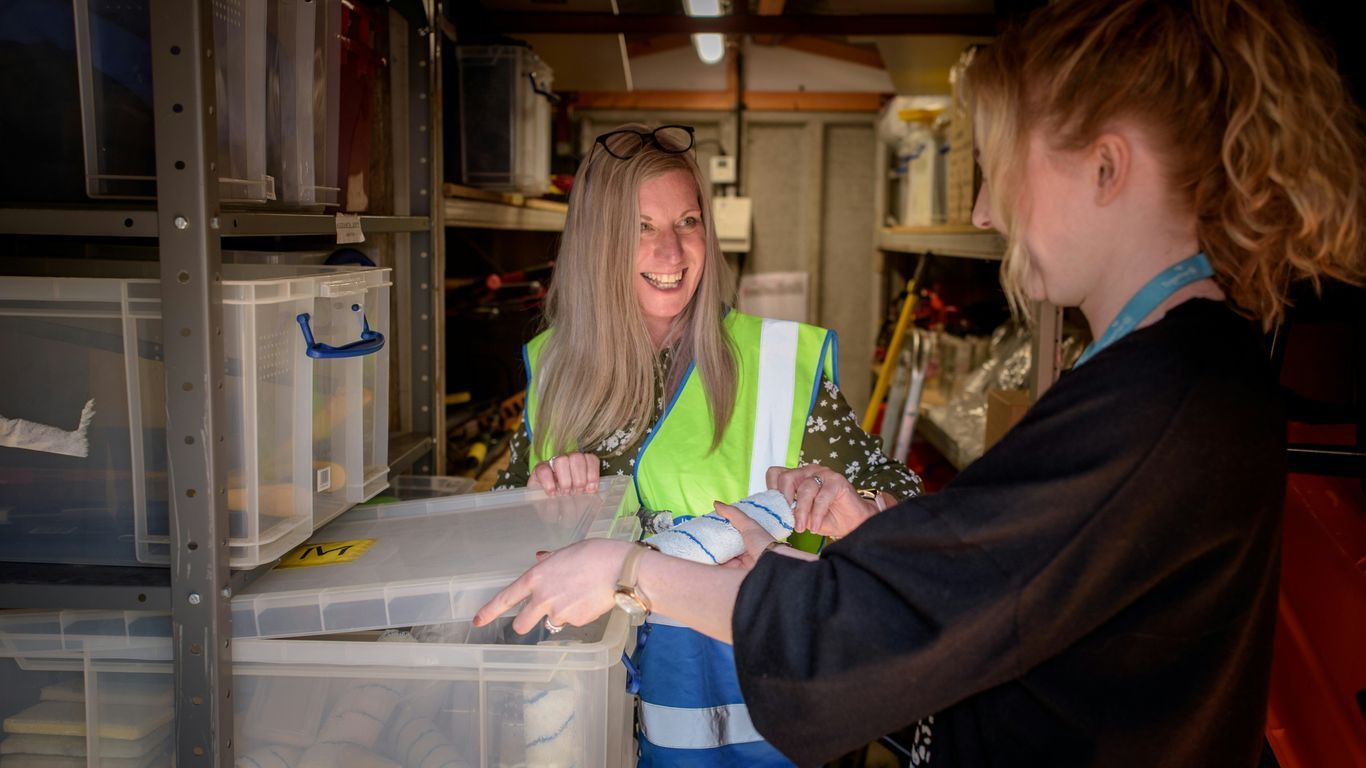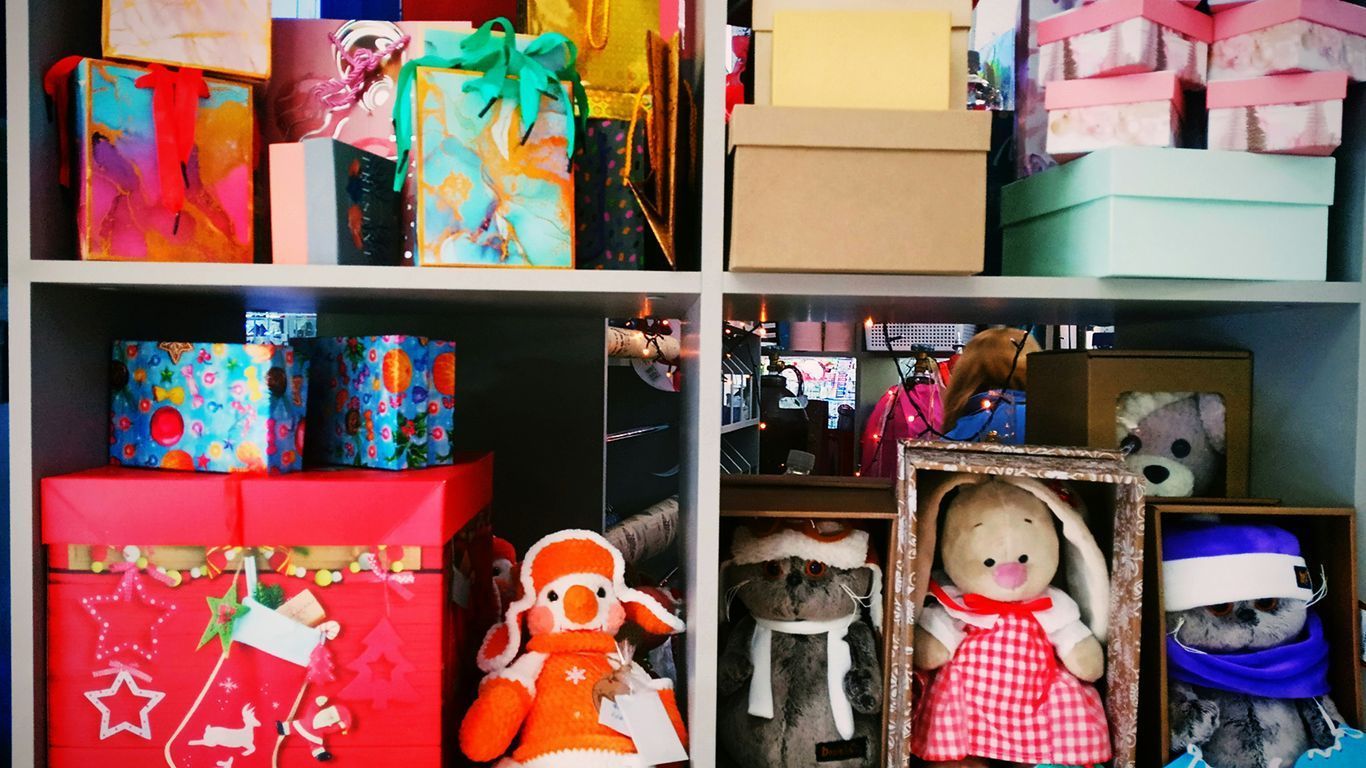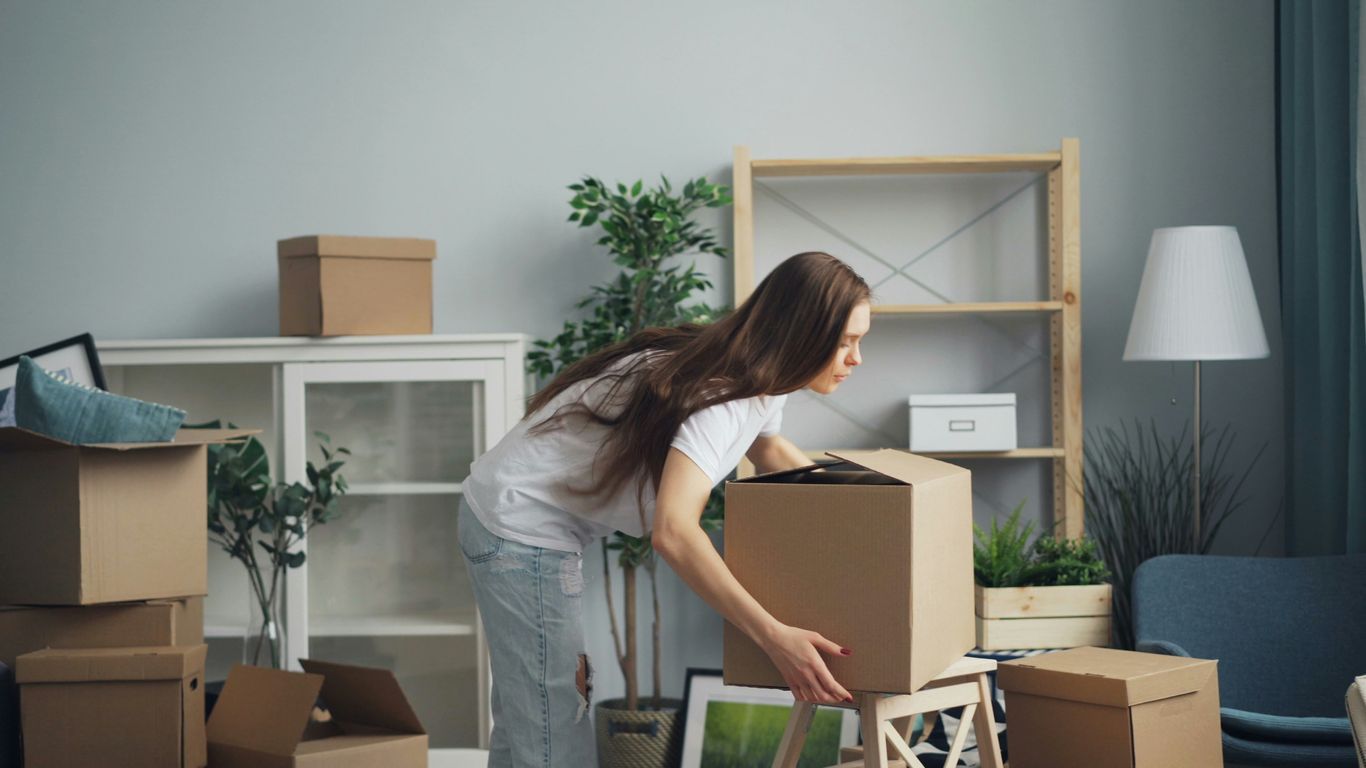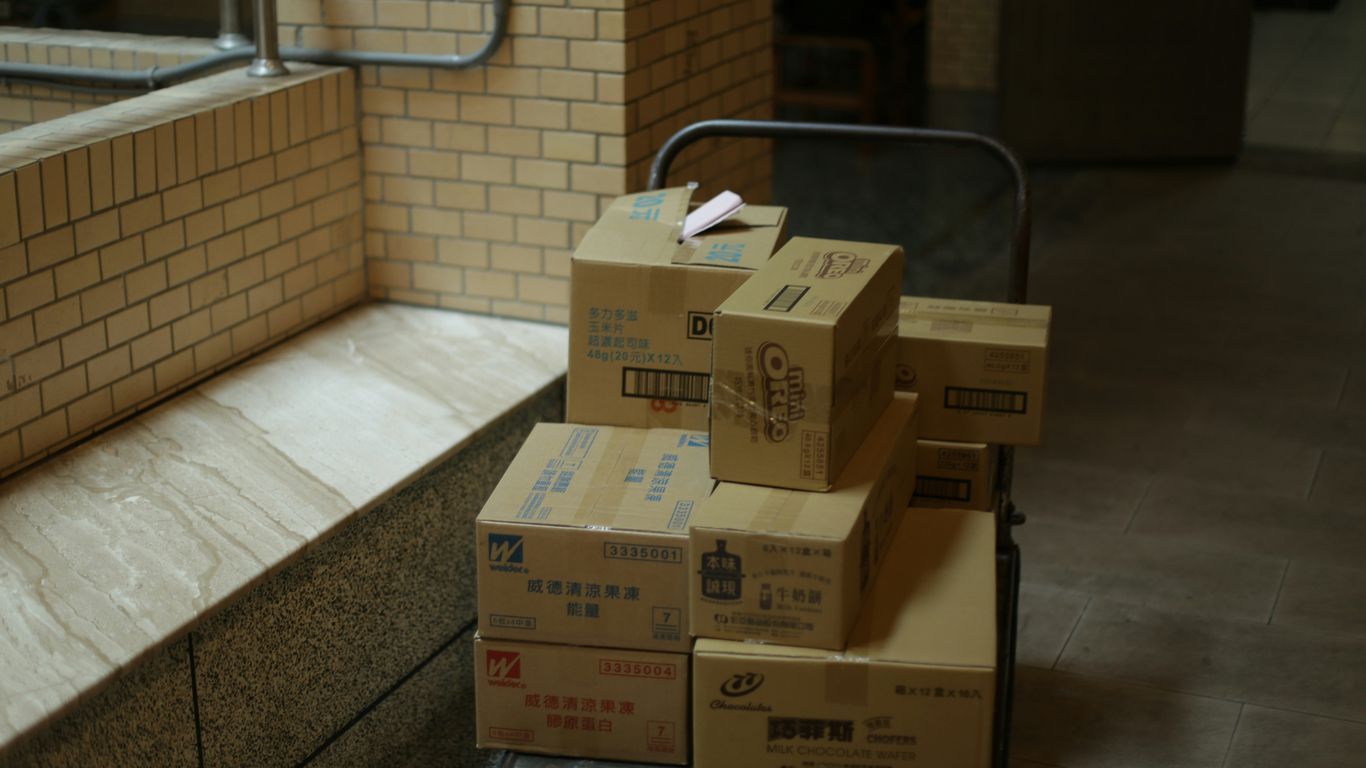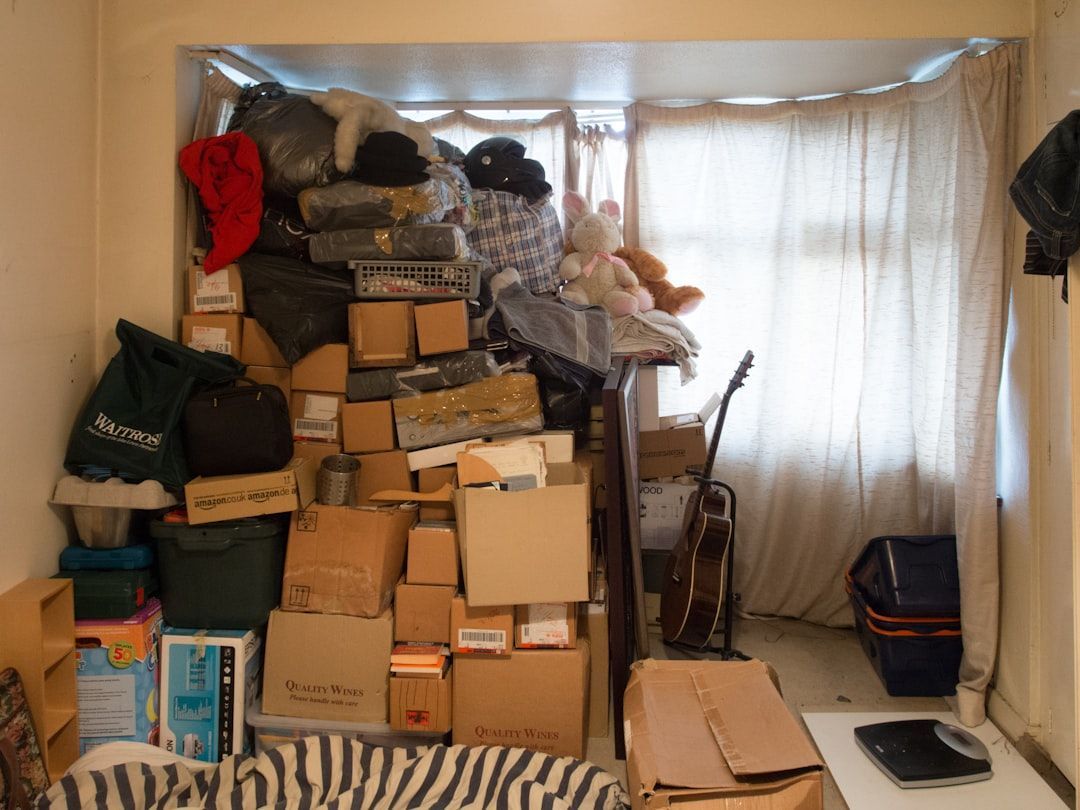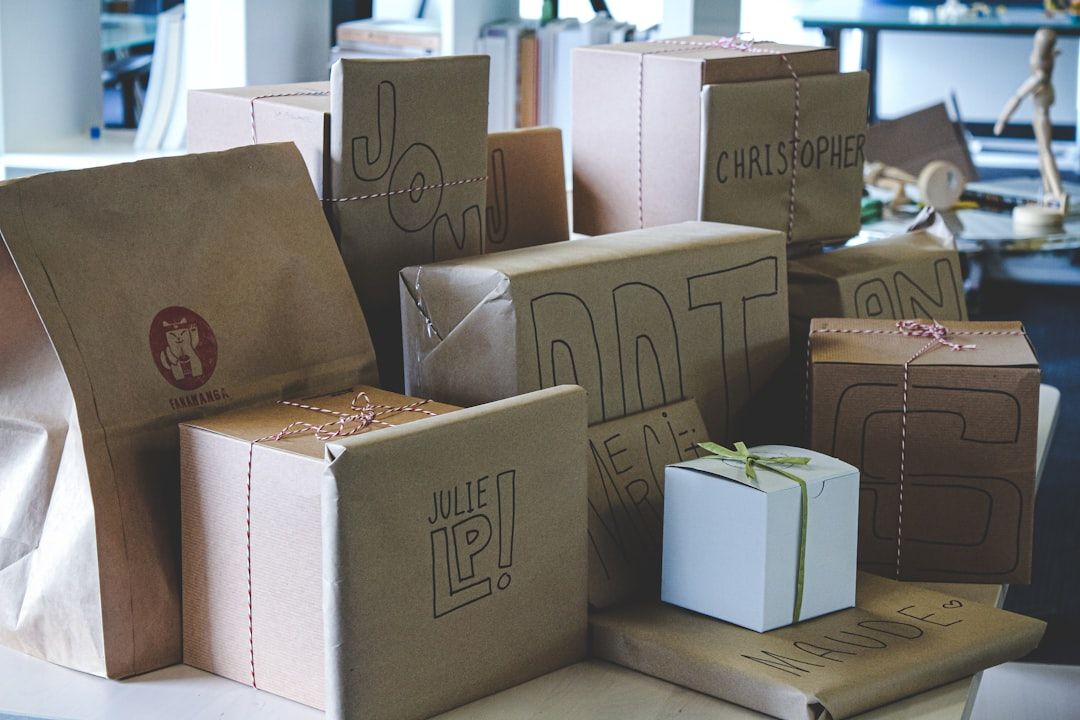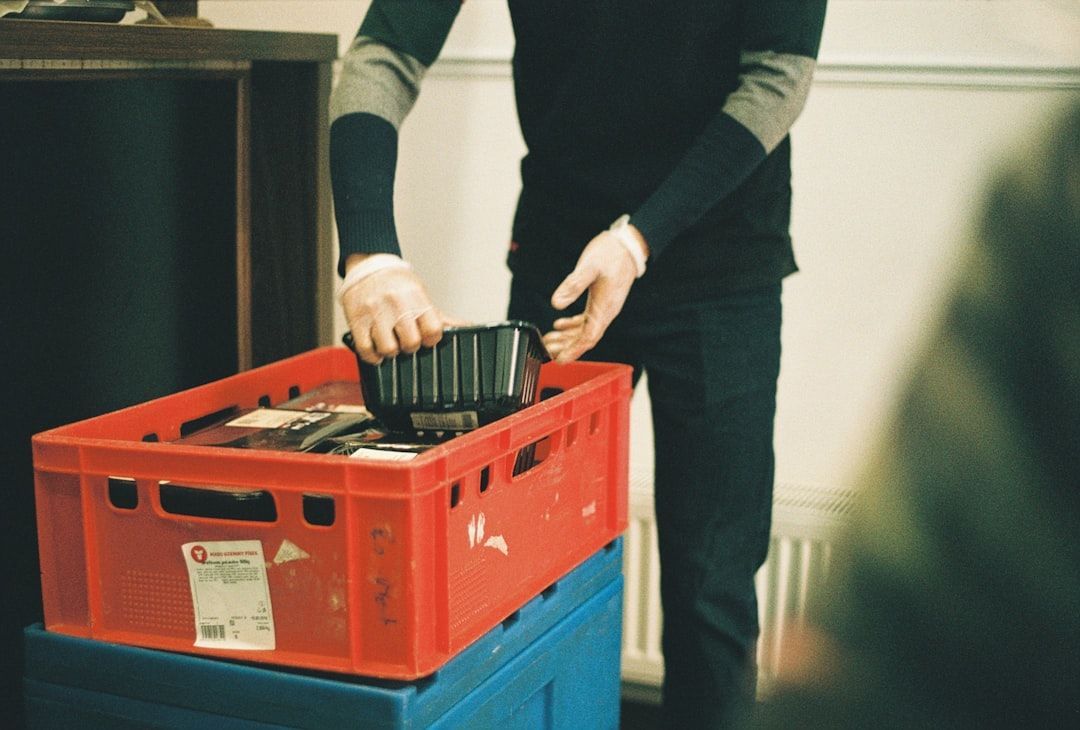Toy Overflow? The Smart Mom’s Guide to Storage
It feels like toys just multiply overnight, doesn't it? One minute your living room is clear, and the next it's a sea of stuffed animals, building blocks, and action figures. Keeping all those playthings organized can feel like a constant battle, especially when you don't have a dedicated playroom. But don't worry, there are plenty of smart ways to manage the toy overflow and keep your home feeling a bit more peaceful. We'll explore some creative storage ideas and simple strategies to help you tame the toy avalanche.
Key Takeaways
- Toys can quickly take over a family home, making organization a daily challenge without a system.
- Creative storage solutions, like repurposing closets and using vertical space, can maximize room.
- Involving children in tidying through fun activities and clear zones teaches responsibility.
- When home storage isn't enough, consider external options for seasonal or temporary overflow.
- Finding effective storage solutions for toys in Campbellsville, KY, involves regular decluttering and adapting systems as children grow.
Taming the Toy Avalanche
It feels like overnight, your living room transforms into a vibrant, albeit chaotic, play zone. Toys seem to multiply, appearing in every corner and crevice. This isn't just about a messy house; it's about reclaiming your space and sanity. Understanding why toy clutter happens is the first step to managing it.
Understanding the Root of Toy Overflow
Toys arrive constantly. Birthdays, holidays, small rewards, or even just a quick trip to the store can bring new items into the home. Add in school projects, party favors, and hand-me-downs, and it’s easy to see how collections outgrow available space. Many homes aren't built with dedicated playrooms or massive storage closets. This means toys often spill into shared areas like the kitchen or hallway, making everyday life feel cramped. Beyond the physical space, there's an emotional attachment too. Some toys represent special memories, making them hard to let go of, even if they're no longer played with. Sometimes, short-term external storage can be a practical solution for these sentimental items.
Adapting Storage to Evolving Needs
As children grow, their interests and the types of toys they play with change. What worked for a toddler won't necessarily work for a school-aged child. It's important to regularly reassess your storage systems. Think about how to keep some toys accessible while storing others out of sight, perhaps higher up or in different rooms. This rotation helps keep play fresh and prevents overwhelm. If your storage bins are overflowing, it’s often a sign that it’s time to edit the collection, not just buy more containers. Consider what your child is actually playing with versus what's just taking up space.
Making the Most of Vertical Space
When floor space is limited, looking up is key. Utilizing wall-mounted shelves, tall bookcases, or even hanging organizers can dramatically increase your storage capacity. This approach not only clears the floor but also makes it easier to see and access toys. Think about how you can use the height of a room to your advantage. For instance, higher shelves can store less frequently used items or seasonal toys, freeing up lower, more accessible areas for everyday playthings. This strategy is especially helpful for maximizing space in smaller homes or apartments. You can even use overhead storage for seasonal items, making retrieval simple with a clear inventory system Maximize your home's space.
Taming toy clutter isn't about eliminating fun; it's about creating a balanced environment where play can thrive without taking over the entire home. It requires a thoughtful approach to what comes in, how it's stored, and what eventually moves on.
Creative Storage Solutions for Every Space
Repurposing Closets for Toy Containment
Closets are often overlooked storage goldmines. Instead of letting them become a black hole for forgotten toys and out-of-season clothes, think about how you can transform them. Adding simple shelves, clear bins, or even hanging organizers can make a huge difference. For art supplies, tall, skinny containers are great for notebooks and pads, while open bins work well for markers and crayons, keeping them accessible without the bulk of individual packaging.
Don't underestimate the power of clear, labeled bins. They make it easy for kids to see what's inside and where things belong, which is half the battle in keeping things tidy.
- Utilize vertical space: Install extra shelves or use stackable bins to maximize every inch. Hanging closet organizers are perfect for games, stuffed animals, or smaller toys, freeing up floor space.
- Keep it open: Store items like markers, crayons, and pencils in open bins or buckets rather than their original packaging. This saves space and makes them easier to grab and put away.
- Clear labeling: Use clear bins so you can see contents at a glance, and add simple labels (pictures work great for younger kids) to designate what goes where.
Utilizing Wall-Mounted and Hanging Organizers
When floor space is at a premium, looking up is your best bet. Wall-mounted solutions like shelves, pegboards, and even simple rails can hold a surprising amount of stuff. Pegboards are incredibly versatile, with various clips and cups that can hold everything from craft supplies to small toys. Hanging organizers, like those five-tier ones you can find online, are fantastic for keeping things off the floor and out of sight, perfect for everything from board games to plush toys.
- Pegboards: These are amazing for displaying art or holding small craft items. You can customize them with different accessories to fit your needs.
- Wall rails and hooks: Great for books, puzzles, or even hanging baskets for smaller toys. They keep items accessible but tidy.
- Hanging closet organizers: These fabric units can hold a lot and are perfect for games, stuffed animals, or even out-of-season clothing, freeing up valuable closet rod space.
Double-Duty Furniture for Playrooms
Think about furniture that does more than one job. Storage ottomans are perfect for stashing toys while also providing extra seating. A small table with built-in storage can be a dedicated art station that also holds supplies. Even a simple ladder shelf can be used to store toys, with larger items on the bottom shelves and smaller ones higher up. Choosing furniture that serves a dual purpose is a smart way to get more storage without taking up extra room.
- Storage Ottomans: Hide toys, books, or blankets inside while using them as seating or a footrest.
- Activity Tables with Storage: Look for tables designed with built-in drawers or shelves to keep art supplies or building blocks contained.
- Cube Storage Units: These are super flexible. You can use them for books, bins of toys, or even display shelves for favorite items.
Organizing Specific Toy Categories
It feels like toys multiply overnight, doesn't it? Between birthdays, holidays, and those little impulse buys, keeping things tidy can feel like a constant battle. But tackling specific toy types with smart storage can make a huge difference. Having a designated spot for everything really does help keep the chaos at bay.
Smart Storage for Puzzles and Games
Puzzles and board games are fantastic for family time, but their boxes and pieces can be a real pain to store. Instead of just shoving them onto a shelf where they might fall out, consider these ideas:
- Zippered Pouches: For board games, ditch the bulky boxes and transfer all the pieces into sturdy, labeled zippered pouches. They take up less space and are easier to manage.
- Vertical Game Racks: Look for racks designed to hold game boxes upright. This saves shelf space and makes it easier to see what you have.
- Puzzle Keepers: If you have a lot of puzzles, consider puzzle storage systems that allow you to keep them flat and stacked, often with individual trays to prevent pieces from getting lost.
Keeping game pieces contained is key. If a game box is falling apart or too big, a simple labeled bag or container is often a better long-term solution.
Streamlining Art Supply Organization
Crayons, markers, paint, glue sticks – art supplies can create a colorful mess if not managed properly. The goal here is accessibility without total disarray.
- Cube Storage with Bins: Cube units are great for corralling art supplies. Use unlidded bins for frequently used items like crayons and play-doh, making it easy for kids to grab and put away. Lidded bins are good for keeping sets of things like watercolors or specific craft kits together.
- Wall-Mounted Organizers: Pegboards or wall-mounted caddies can keep smaller items like scissors, brushes, and glue sticks off the table and within easy reach.
- Rolling Carts: A rolling cart is perfect for art supplies. You can move it around the house and keep everything contained in one place.
Clever Solutions for Building Blocks
Building blocks, especially LEGOs, are a classic toy that can quickly take over a room. The key is to keep the pieces sorted and accessible.
- Categorize by Type: Store LEGOs in clear bins, perhaps separated by color or by specific sets if your child likes to rebuild them. This makes finding specific pieces much easier.
- The IKEA TROFAST System: This system is practically made for LEGOs. The various sized bins fit perfectly into the frames, allowing you to create a customized storage solution that keeps everything neat and tidy.
- Play-Based Storage: Think about how your child plays. Do they prefer sorting by color? By type of brick? Organize them in a way that makes sense for their play style, making cleanup less of a chore and more of a natural part of the process.
Involving Children in the Organization Process
It might seem like a big ask, but getting your kids on board with tidying up is actually a game-changer. Think of it less as a chore and more as a shared project. When children have a hand in deciding where things go and why, they're more likely to respect the system. It’s about teaching them responsibility, not just making them clean up after themselves.
Teaching Responsibility Through Tidy Habits
Start small. Instead of a massive toy purge, tackle one category at a time. Ask your child to help you sort through their stuffed animals, for instance. You can frame it as a way to help others – maybe some toys can be donated to kids who don't have as many. This teaches generosity and helps them understand that not everything can be kept forever. It’s about building a mindset, not just a clean room.
Kids are more likely to take care of things if they feel a sense of ownership over the organization. Letting them make some decisions, even small ones, gives them that ownership.
Making Tidying a Fun Activity
Who says tidying has to be boring? Turn it into a game! You could have a "15-minute tidy challenge" where everyone races to put away as many toys as possible before a timer goes off. Or, create "zones" for different types of toys and have kids move them to the correct zone. Music can also help – put on some upbeat tunes and make it a dance party while you clean.
Establishing Clear Zones for Toys
Kids thrive on structure, even if they don't always show it. Using cube organizers or labeled bins can create clear boundaries for different toy types. For example, one bin for building blocks, another for art supplies, and a third for cars. This visual cue helps children understand where each item belongs. It also makes cleanup much faster because they know exactly where to put things. If you have a lot of small pieces, like LEGOs, consider using wall-mounted organizers or hanging pockets so they're off the floor and easily accessible for the right age group.
When Home Storage Isn't Enough
Sometimes, no matter how much you declutter or how creatively you arrange things, your home just feels… full. Toys seem to multiply, and suddenly, the living room floor is a permanent obstacle course. This is a common feeling for many families, especially when life throws curveballs like a new baby, a house move, or even just the changing seasons.
Considering External Storage Options
When your house is bursting at the seams, looking beyond your own four walls can be a lifesaver. Renting a storage unit can provide much-needed breathing room. Think of it as a temporary extension of your home, a safe place for those items that are taking up too much valuable space. This is particularly useful for:
- Seasonal items: Outdoor toys like bikes, scooters, or even large play structures can be stored away during winter months.
- Outgrown clothes and toys: If you have younger children who will eventually use them, or if you're planning to pass them down, a unit keeps them organized and out of the way.
- Sentimental items: Sometimes, a child's first drawings or a beloved, but bulky, stuffed animal are too precious to part with, but too large to keep on display.
The key is to view external storage not as a failure of organization, but as a practical solution for managing transitions and maximizing your living space.
Managing Seasonal Toy Overflow
Seasonal toys are a big culprit for clutter. Think about all those summer beach toys, inflatable pools, or winter sleds. Instead of letting them take up prime real estate in your garage or closets all year round, consider a more strategic approach. A small, affordable storage unit can be perfect for housing these items when they're not in use. This keeps your main living areas clear and makes it easier to access the right toys when the season changes.
Finding Affordable Storage Unit Rentals
Don't let the idea of renting a storage unit intimidate you. Prices can be surprisingly reasonable, especially if you shop around. Many facilities offer different sizes, so you can choose one that fits your needs without paying for excess space. Look for:
- Local facilities: Often, smaller, local storage places can be more budget-friendly than large national chains.
- Online deals: Many companies offer introductory discounts or promotions for new customers.
- Compare unit sizes: Measure what you need to store and choose the smallest unit that will comfortably fit your items. This helps keep costs down.
Maintaining Order in Campbellsville Homes
Keeping toys from taking over your living space is an ongoing project, especially here in Campbellsville. Life happens – birthdays, holidays, or just a sudden growth spurt in toy collection can leave you feeling buried. It’s not about having a perfect, magazine-ready home all the time, but about creating systems that work for your family and make daily life a bit smoother. Regularly revisiting your toy storage strategy is key to preventing that overwhelming feeling.
Regular Decluttering Strategies
Think of decluttering not as a chore, but as a regular reset. Aim to do a quick sweep at least twice a year, perhaps before the holidays and again when school lets out for the summer. When you're doing this, it can be helpful to do a first pass on your own. This way, you can quickly toss anything that's broken, truly unusable, or that you know your kids have outgrown and won't miss. This saves you from having to debate every single item with your children, making the process much faster.
It’s easy to get caught up in the idea of a perfectly organized room, but the reality is that kids will be kids. The goal is to have a system that allows for play and easy clean-up, not necessarily a showroom.
Adapting Systems as Children Grow
What works for a toddler won't work for a school-aged child. As your kids get older, their interests change, and so should their storage. Building blocks might need a dedicated zone with easy-to-access bins, while art supplies might require more secure, perhaps higher, storage if permanent markers are involved. Pay attention to how your children actually use their space and what they ask for. Sometimes, a simple request for a small desk can make a big difference in how they engage with their belongings and keep things tidy.
Finding Local Storage Solutions in Campbellsville KY
Sometimes, despite your best efforts, you just need a little extra breathing room. This is especially true for seasonal items like outdoor toys or holiday decorations that only see the light of day a few months out of the year. Exploring options like local storage units can be a game-changer. It allows you to keep your home feeling less cluttered without having to get rid of items you might want later. Many places offer flexible terms, making it a practical solution for managing overflow during busy periods or life transitions.
Keeping your Campbellsville home tidy can be a breeze! If clutter is taking over, consider smart storage solutions. Visit our website to find the perfect way to organize your space and bring peace back to your home.
Taming the Toy Tornado
So, we've talked about how toys can really pile up, making even the biggest house feel cramped. But it doesn't have to be that way. By using smart storage ideas, getting the kids involved, and maybe even thinking outside the box with a storage unit for those seasonal items, you can definitely get a handle on the clutter. It’s all about finding a balance so your home is a place for fun, but also a place where you can actually walk around without tripping. Give these tips a try, and hopefully, you'll find a little more peace and a lot less plastic.
Frequently Asked Questions
Why do my kids' toys always seem to take over the house?
It's common for toys to multiply quickly! Gifts for birthdays and holidays, small prizes, and even souvenirs can add up. Plus, kids often get new items without getting rid of old ones, leading to a constant stream of toys that can quickly fill up your living space, making it feel cluttered.
How can I make toy storage work as my child gets older?
As kids grow, their interests change. What they loved at age 5 might not be interesting at age 10. It's smart to have storage that can change with them. Think about using bins that can hold different things, or shelves that can be rearranged. This way, the storage system stays useful as your child's play habits evolve.
What's the best way to store puzzles and board games?
Bulky game boxes can be tricky. A great idea is to put all the pieces for a game into a sturdy, zippered pouch instead of the original box. This saves space and keeps everything together. For puzzles, consider a puzzle rack or flat drawers where they can be stored stacked up neatly.
How can I get my children to help with tidying up?
Make tidying a fun part of playtime! You can turn it into a game, like a race to see who can put away the most toys in two minutes. Using colorful bins or baskets that are easy for kids to access and understand (maybe with pictures on them) also helps them learn where things belong and feel proud of their tidy space.
What should I do if I just don't have enough space at home for all the toys?
When your home feels too full, think about temporary storage outside your house. This is great for things like seasonal toys (bikes in winter, for example) or items you want to keep but don't need daily access to. Comparing prices for storage units can help you find an affordable option to free up space at home.
How often should I declutter toys?
It's a good idea to go through toys at least once or twice a year. The best times are usually before the holidays, when new toys might arrive, and at the end of summer before school starts. This helps prevent toys from piling up too much and makes it easier to manage the clutter.


